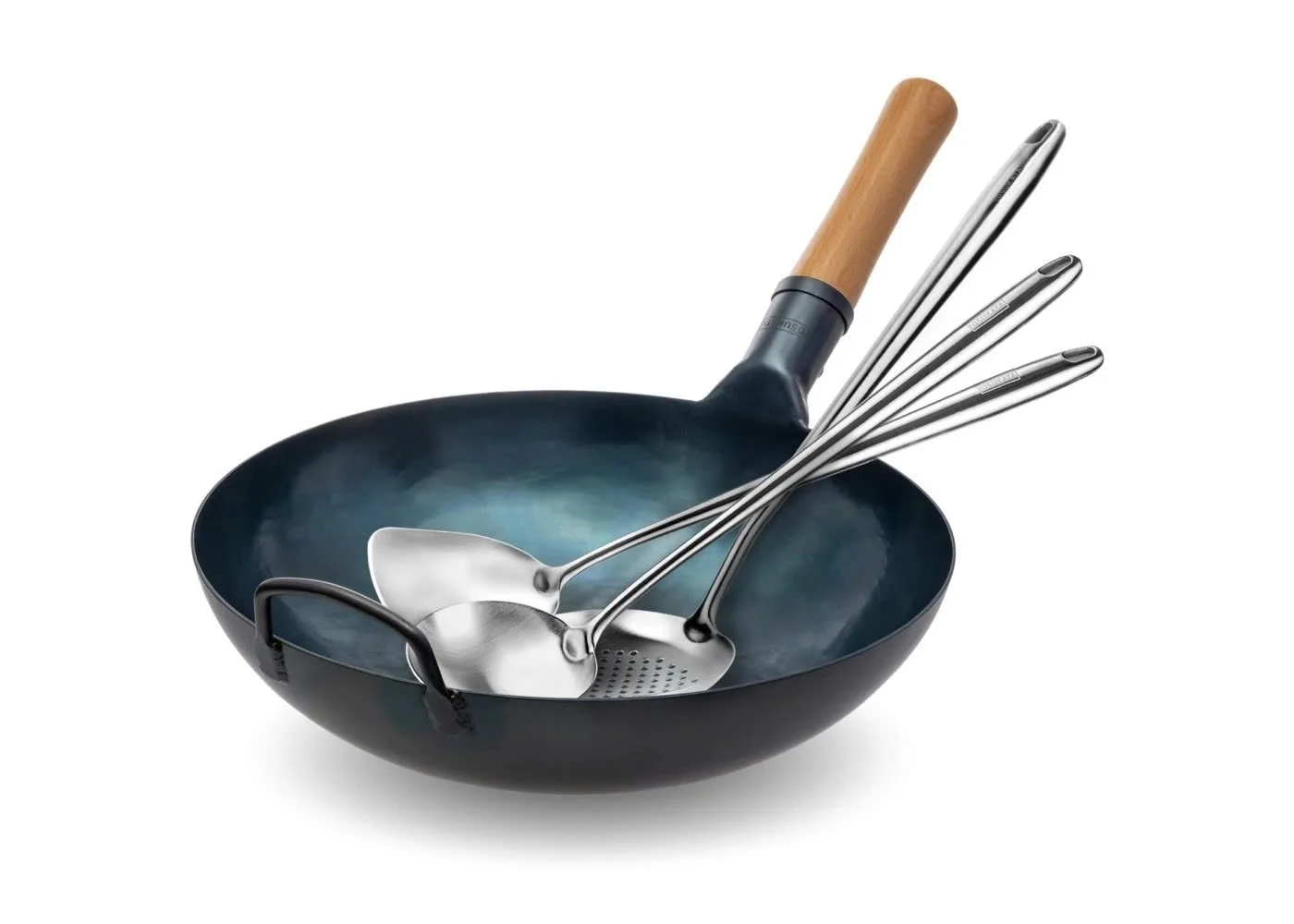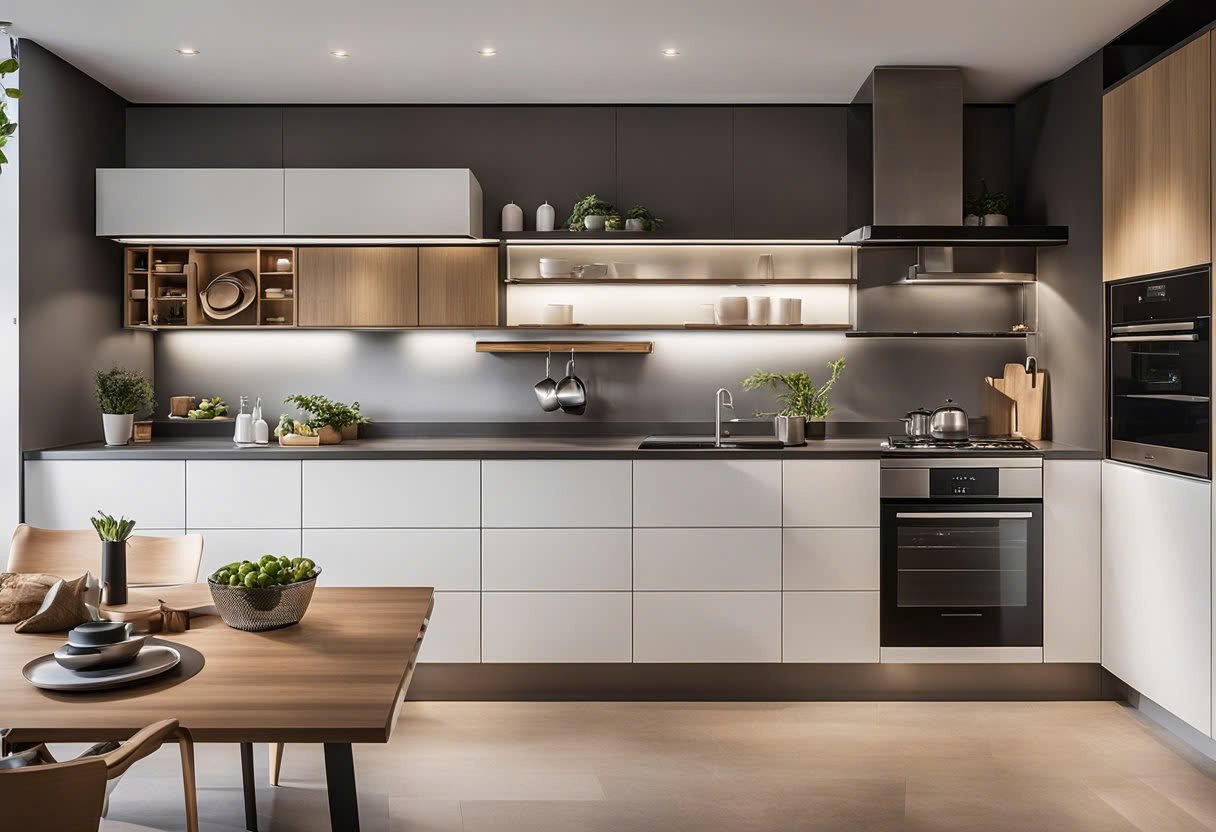How to Choose the Perfect Carbon Steel Wok: Size, Thickness, and Coating
Selecting the right carbon steel wok is essential for achieving exceptional cooking results, whether you're a seasoned chef or a home cook exploring the art of stir-frying. Selecting the right carbon steel wok is essential for achieving exceptional cooking ...
Selecting the right carbon steel wok is essential for achieving exceptional cooking results, whether you're a seasoned chef or a home cook exploring the art of stir-frying. With numerous options available on the market, understanding the key factors such as size, thickness, and coating can help you make an informed choice. This article provides a comprehensive guide to choosing the ideal carbon steel wok for your culinary needs.
Choosing the Right Size
The size of your wok plays a significant role in its functionality and suitability for your kitchen.
Small (10-12 inches): These are ideal for individual servings or small households. They’re lightweight, easy to handle, and heat up quickly, making them perfect for quick meals.
Medium (13-14 inches): A versatile choice, medium-sized woks can handle meals for 2-4 people. They provide ample cooking surface while still being manageable in terms of weight and size. This is the most common size for home kitchens.
Large (15 inches and above): Designed for larger families or entertaining guests, large woks can accommodate bigger portions and are excellent for deep-frying or steaming. However, they may require a larger stovetop and more storage space.
When choosing a size, consider your typical portion sizes, the number of people you cook for, and your stove’s capacity. A wok that’s too large may not heat evenly on a small burner, while a small wok might not meet the needs of a larger household.
Understanding Thickness
The thickness of a carbon steel wok affects its heating properties, weight, and durability.
Thin Woks (1.5 mm or less): These woks heat up quickly and are lightweight, making them easier to handle. However, they may warp under high heat and are less durable over time.
Standard Woks (1.6-2 mm): The most common thickness for carbon steel woks, offering a balance between weight and durability. These woks heat evenly and are sturdy enough for everyday use.
Thick Woks (2.5 mm or more): Heavier and more durable, thick woks retain heat better, making them suitable for high-temperature cooking. However, their weight can make them more challenging to maneuver, particularly for tossing ingredients.
Choosing the right thickness depends on your cooking style and strength. A standard-thickness wok is usually the best choice for quick stir-frying and frequent use.
Evaluating Coatings
Carbon steel woks come with different types of finishes or coatings that impact their usability and maintenance.
Uncoated Carbon Steel: Traditional and authentic, these woks require seasoning before use to develop a natural non-stick surface. With proper care, they improve over time, offering superior performance and flavor. However, they need regular maintenance to prevent rusting.
Pre-Seasoned Woks: These come with a factory-applied layer of seasoning, saving you the initial effort. While convenient, they still require ongoing seasoning and care to maintain their performance.
Non-Stick Coated Woks: Featuring a synthetic non-stick layer, these woks are easier to clean and ideal for beginners. However, the coating may wear off over time, and they can’t handle high heat as well as uncoated or pre-seasoned options.
For most cooks, uncoated or pre-seasoned carbon steel woks provide the best balance of performance, durability, and authenticity.
Additional Considerations
Handle Style: Woks typically feature either a single long handle, two loop handles, or a combination of both. Long handles provide better control for tossing, while loop handles are easier to lift when the wok is full.
Shape: Traditional woks have a rounded bottom, which is ideal for use over an open flame. However, flat-bottomed woks are better suited for modern stovetops, including electric and induction burners.
Weight: Consider a wok that you can comfortably lift and maneuver, especially if you plan to toss ingredients frequently.
Testing Before Purchase
If possible, test the wok before buying. Check its balance and grip to ensure it feels comfortable in your hands. Look for any uneven surfaces or sharp edges that could affect cooking performance or safety.
Recommendations for Caring for Your Carbon Steel Wok
Proper care and maintenance of your carbon steel wok will ensure its longevity and optimal cooking performance. Here are some essential tips:
Seasoning: If you’ve purchased an uncoated wok, seasoning it before the first use is crucial. This creates a non-stick surface and prevents rusting. Regularly re-season the wok as needed to maintain its non-stick properties.
Cleaning: Always clean your wok with hot water and a soft sponge after each use. Avoid using soap or harsh scrubbers, as they can strip the seasoning. You can gently scrub food with a little kosher salt and water if the food is stuck.
Drying: After washing, thoroughly dry your wok on the stovetop over low heat to prevent rusting. Once dry, lightly oil the surface to maintain the seasoning and protect the wok.
Storage: Store your wok in a dry place. If you're not using it for a while, apply a thin layer of vegetable oil to prevent oxidation and rust.
By following these care tips, you can ensure that your carbon steel wok remains in top condition for many years of cooking enjoyment.




















